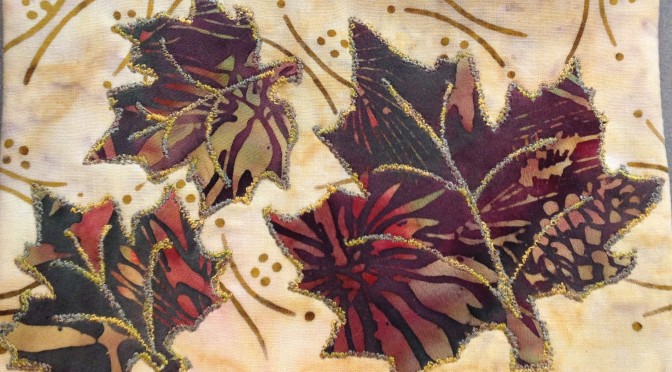I have to assume Bonnie Sullivan has a staff of capable employees to pattern test, cut, prep, post, remind, assist, edit… etc. Some one to help her look GOOD! I love her stuff and she is always “Bonnie-on-the-spot”.
Me… not so much. I have a FABULOUS staff, but they are busy and they merely laugh at me when I say I am running late with a project. It’s true… chastising and ridicule… that’s all I get… just ask them. I tell Brianna that Martha Stewart would never go through what I go through, and she promptly replies, “But you are no Martha Stewart.” Hmmm, true.
So, finally, I have my blocks done for step four. We have a joke in the classroom that everything “takes five minutes” because it’s “super easy” but the truth is the only thing I can do in five minutes is warm up my iron.
But these blocks… super easy. I think they are called “woodpile” blocks. If you peruse down the post, it will look like there are LOTS of steps, but that’s not the case. It is strip piecing five different simple strip sets, slicing into narrow strips, then sewing them back together into only 20 blocks; 8 are left to right stacked blocks, and 12 are right to left (reversed) blocks.
There is nothing tricky about them, but you will want to press well, and you should make sure your 1/4″ seam allowance is spot on or your blocks will be too small, because there is no trimming…
So, to begin, cut your background (one color of background, or your mixed lights) into one 8″ strip x WOF (width of fabric), one 6 1/2″ x WOF, one 5″ x WOF, one 3 1/2″ x WOF and one 2″ x WOF.
Next, cut a matching dark fabric the same way, one 8″ x WOF, one 6 1/2″ x WOF, one 5″ x WOF, one 3 1/2″ x WOF and one 2″ x WOF. You will also need a 9 1/2″ x WOF. I should mention that all of your background can be one color if that is what you like, but your “darks” should all be different. In fact, if you are using fat quarters and you have 21″ strips instead of the full 42″ in a strip, that will look terrific, but you’ll have to make two of each of the strip sets so that you have enough pieces.
Now, with an 8″ strip of background and a 2″ strip of dark, sew these together into your first strip set.
![IMG_1689[1]](https://thepenandpatch.files.wordpress.com/2014/11/img_16891-e1416533895610.jpg?w=300&h=250) Press to the dark. Then cross cut into twenty 2″ strips (these strips should measure 9 1/2″):
Press to the dark. Then cross cut into twenty 2″ strips (these strips should measure 9 1/2″):![IMG_1690[1]](https://thepenandpatch.files.wordpress.com/2014/11/img_16901-e1416533978665.jpg?w=296&h=300) Next, sew your 6 1/2″ background strip to a 3 1/2″ dark. Press, then cut into twenty 2″ strips:
Next, sew your 6 1/2″ background strip to a 3 1/2″ dark. Press, then cut into twenty 2″ strips:![IMG_1692[1]](https://thepenandpatch.files.wordpress.com/2014/11/img_16921-e1416534063493.jpg?w=300&h=213) Next, sew your 5″ background to a 5″ dark. Press, then cut into twenty 2″ strips.
Next, sew your 5″ background to a 5″ dark. Press, then cut into twenty 2″ strips.![IMG_1696[1]](https://thepenandpatch.files.wordpress.com/2014/11/img_169611-e1416534178228.jpg?w=300&h=266) Do you find it interesting that each strip so far is sitting at a different angle? Almost like I am just messing with you….but I’m not…. it’s just our constant reminder… I’m not Martha Stewart! I have no photography assistant, no production assistant, and in fact, I am just trying to keep my ridiculous cat out of the shot… I had to give him a decoy project… at the moment he thinks I am making a pillow…
Do you find it interesting that each strip so far is sitting at a different angle? Almost like I am just messing with you….but I’m not…. it’s just our constant reminder… I’m not Martha Stewart! I have no photography assistant, no production assistant, and in fact, I am just trying to keep my ridiculous cat out of the shot… I had to give him a decoy project… at the moment he thinks I am making a pillow…![IMG_1670[1]](https://thepenandpatch.files.wordpress.com/2014/11/img_16701.jpg?w=225&h=300)
Ok, so, at this point you have three strip sets, that have each been cut up into twenty 2″ strips. You have two more strip sets to make. One is the 3 1/2″ background and the 6 1/2″ print and one is the 2″ background with the 8″ print.![IMG_1698[1]](https://thepenandpatch.files.wordpress.com/2014/11/img_169811-e1416534584847.jpg?w=300&h=224) Finally, you will cut the 9 1/2″ strip into 2″ strips.
Finally, you will cut the 9 1/2″ strip into 2″ strips.
![IMG_1701[1]](https://thepenandpatch.files.wordpress.com/2014/11/img_17011-e1416534707490.jpg?w=300&h=262)
![IMG_1700[1]](https://thepenandpatch.files.wordpress.com/2014/11/img_17001-e1416543642371.jpg?w=300&h=221)
![IMG_1702[1]](https://thepenandpatch.files.wordpress.com/2014/11/img_17021-e1416544614475.jpg?w=283&h=300) I hope you have fun piecing your blocks! They are super simple… just five minutes! After this we just have one more block… then we get to put this thing together!! See you soon!
I hope you have fun piecing your blocks! They are super simple… just five minutes! After this we just have one more block… then we get to put this thing together!! See you soon!




![IMG_1622[1]](https://thepenandpatch.files.wordpress.com/2014/11/img_16221-e1416334116236.jpg?w=300&h=224)
![IMG_1627[1]](https://thepenandpatch.files.wordpress.com/2014/11/img_16271-e1416334256811.jpg?w=300&h=222)
![IMG_1628[1]](https://thepenandpatch.files.wordpress.com/2014/11/img_16281.jpg?w=300&h=225)
![IMG_1637[1]](https://thepenandpatch.files.wordpress.com/2014/11/img_16371.jpg?w=225&h=300)
![IMG_1630[1]](https://thepenandpatch.files.wordpress.com/2014/11/img_16301-e1416333075475.jpg?w=300&h=212)
![IMG_1632[1]](https://thepenandpatch.files.wordpress.com/2014/11/img_16321.jpg?w=300&h=225)
![IMG_1631[1]](https://thepenandpatch.files.wordpress.com/2014/11/img_16311-e1416333294674.jpg?w=300&h=206)
![IMG_1633[1]](https://thepenandpatch.files.wordpress.com/2014/11/img_16331.jpg?w=300&h=225)
![IMG_1634[1]](https://thepenandpatch.files.wordpress.com/2014/11/img_16341.jpg?w=225&h=300)
![IMG_1635[1]](https://thepenandpatch.files.wordpress.com/2014/11/img_16351-e1416333812735.jpg?w=300&h=236)
![IMG_1636[1]](https://thepenandpatch.files.wordpress.com/2014/11/img_16361-e1415663488950.jpg?w=300&h=214)


![IMG_1609[1]](https://thepenandpatch.files.wordpress.com/2014/11/img_16091-e1414819525263.jpg?w=300&h=233)
![IMG_1608[1]](https://thepenandpatch.files.wordpress.com/2014/11/img_16081-e1414855193536.jpg?w=300&h=298)
![IMG_1606[1]](https://thepenandpatch.files.wordpress.com/2014/11/img_16061-e1414820638866.jpg?w=300&h=273)
![IMG_1610[1]](https://thepenandpatch.files.wordpress.com/2014/11/img_16101-e1414820966636.jpg?w=300&h=182)
![IMG_1611[1]](https://thepenandpatch.files.wordpress.com/2014/11/img_16111-e1414821162854.jpg?w=300&h=225)
![IMG_1607[1]](https://thepenandpatch.files.wordpress.com/2014/11/img_16071-e1414821615347.jpg?w=294&h=300)
![IMG_1605[1]](https://thepenandpatch.files.wordpress.com/2014/11/img_16051-e1414822313718.jpg?w=300&h=281)